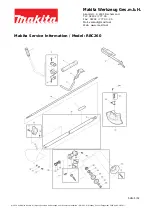
6
Oscillators
Each oscillator of
troika
has similar controls. The only difference
between each oscillator is the
Waveform Crossfade
controls and the
1V/Oct Link Toggle
normalisations.
Frequency/Pitch
Coarse:
The
Coarse
knobs control the fundamental frequency of
the corresponding oscillator, effectively changing the pitch of all
waveforms.
•
Turning the knob clockwise will increase the frequency.
•
Turning the knob anticlockwise will decrease the frequency.
Fine:
The
Fine
knobs are used for minute control of the corresponding
oscillator’s fundamental frequency and is relative to the frequency
defined by the
Coarse
knob. This will also effectively change the pitch of
all waveforms.
•
Turning the knob clockwise will increase the frequency.
•
Turning the knob anticlockwise will decrease the frequency.
1V/Oct Input:
The
1V/Oct Inputs
are bipolar control voltage inputs
that are calibrated to 1V per Octave.
•
This is traditionally used for frequency control (musical pitch) sent
from a sequencer or keyboard.
•
Control voltage is summed with the values set by the
Coarse
and
Fine
knobs.
1V/Oct Link Toggle:
The
1V/Oct Link Toggles
will set
1V/Oct Input
normalisations between each oscillator. If a toggle is in the down
position, the signal present at the uppermost oscillator’s
1V/Oct Input
is normalised to the next oscillator’s
1V/Oct Input
. If a toggle is in the
up position, normalisation will be broken. Inserting a secondary signal
to the normalised
1V/Oct Input
will also break the normalisation. If a
toggle is in the up position, no normalisation is configured.
































